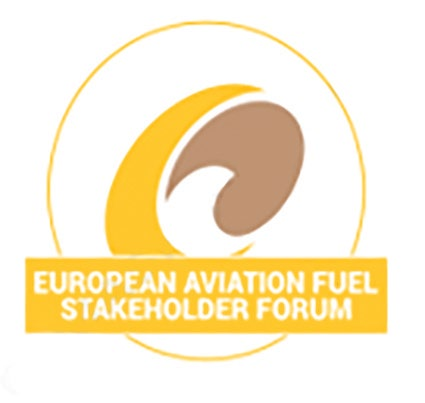In-sector mitigation measures from technology, operations and fuels, which are covered in other Chapters of this report, contribute to reductions in both CO2 and non- CO2 emissions and the achievement of both ICAO goals and general European climate targets as part of the path towards climate neutrality.
When assessing the future effect of mitigation measures on the climate impact of aviation emissions, the impact from non-CO2 emissions could be expressed as CO2 equivalent emissions in order to assess trade-offs. However, this equivalence is influenced by the inherent uncertainties in the ERF terms as well as the metric (e.g. ATR, GWP)5 background atmospheric conditions and time horizon chosen. Cost-effective actions should continue to be considered in order to reduce the overall climate impact from all aviation emissions, taking into account the remaining uncertainties in non-CO2 effects as part of a risk-based assessment in order to ensure confidence in robust mitigation gains.
European body for jet fuel standards and safety certification
 This European Parliament has requested a pilot project (2023-2027), implemented by DG MOVE and EASA, to explore the feasibility of optimising fuel composition in order to reduce the environmental and climate impacts from non-CO2 emissions without negatively impacting safety (e.g. lower aromatics, sulphur). The project includes preparatory work to develop a fuel standard for kerosene whilst maximizing SAF benefits, as kerosene and SAF will be increasingly blended in the future. The project will also assess the potential establishment of an EU Aviation Fuels Standardisation Body.
This European Parliament has requested a pilot project (2023-2027), implemented by DG MOVE and EASA, to explore the feasibility of optimising fuel composition in order to reduce the environmental and climate impacts from non-CO2 emissions without negatively impacting safety (e.g. lower aromatics, sulphur). The project includes preparatory work to develop a fuel standard for kerosene whilst maximizing SAF benefits, as kerosene and SAF will be increasingly blended in the future. The project will also assess the potential establishment of an EU Aviation Fuels Standardisation Body.
Past efforts to mitigate the climate impact from aviation have focused on CO2 emissions to a large extent. However, there are existing measures to mitigate the impact of non-CO2 emissions, including aircraft engine emissions certification standards for NOX and nvPM and the promotion of Sustainable Aviation Fuels (SAF). The large sensitivity of contrail formation and, consequently, the contrail climate impact of aerosol emissions
[11]
indicates that introducing cleaner fossil-based fuels and Sustainable Aviation Fuels (e.g. lower aromatics, sulphur), would be a promising mitigation method in the formation of persistent contrail-cirrus clouds. Nevertheless, the introduction of SAF alone may not balance the increase in contrail cirrus climate impact due to the current and forecasted increases in air traffic
[12]
.
Additional mitigation measures are being explored within Europe and internationally. This includes efforts to promote cleaner fuels through fuel standards and to demonstrate the feasibility of incorporating contrail mitigation into the routine operations of the Single European Sky Network Manager and Air Navigation Service Providers. Research to enhance weather and contrail forecasting capabilities will be critical to assess where significant mitigation benefits can be achieved and the associated costs to avoid persistent contrail formation
[20]
,
[21]
,
[22]
. The updated EU Innovation Fund has supported mitigating these impacts since 2023.
Based on the 2023 revisions to the EU ETS Directive
[23]
and the 2040 climate target communication
[24]
, the European Commission has also developed a Monitoring, Reporting, and Verification (MRV) framework in line with the precautionary principle to address the non-CO
2 aviation effects on climate change
[25]
. The revised EU ETS Directive requires aircraft operators to monitor and report once a year on the non-CO
2 aviation effects occurring from 1 January 2025. By the end of 2027, based on the results from the application of the MRV framework for non-CO
2 aviation effects, the Commission shall report and, where appropriate, act with a legislative proposal to mitigate non-CO
2 by expanding the scope of the EU ETS.
The MRV is applicable from 1 January 2025 and is based on the two guiding principles of:
- Flexibility
- Use of GWP metric with multiple time horizons (20, 50 and 100 years);
- Simplified approach for small aeroplane operators with emissions below a threshold;
- MRV IT tool provided by the Commission to automate processes and minimise administrative effort (operators also allowed to use their own alternative tools); and
- Provision of default values, where needed, to fill data gaps (e.g. engine identifier, fuel properties).
- Precision – requires the ‘weather-dependent’ approach to be used as a default approach.

 The IPCC states that climate change adversely affects both physical health and mental health.
The IPCC states that climate change adversely affects both physical health and mental health.
 This European Parliament has requested a pilot project (2023-2027), implemented by DG MOVE and EASA, to explore the feasibility of optimising fuel composition in order to reduce the environmental and climate impacts from non-CO2 emissions without negatively impacting safety (e.g. lower aromatics, sulphur). The project includes preparatory work to develop a fuel standard for kerosene whilst maximizing SAF benefits, as kerosene and SAF will be increasingly blended in the future. The project will also assess the potential establishment of an EU Aviation Fuels Standardisation Body.
This European Parliament has requested a pilot project (2023-2027), implemented by DG MOVE and EASA, to explore the feasibility of optimising fuel composition in order to reduce the environmental and climate impacts from non-CO2 emissions without negatively impacting safety (e.g. lower aromatics, sulphur). The project includes preparatory work to develop a fuel standard for kerosene whilst maximizing SAF benefits, as kerosene and SAF will be increasingly blended in the future. The project will also assess the potential establishment of an EU Aviation Fuels Standardisation Body.

